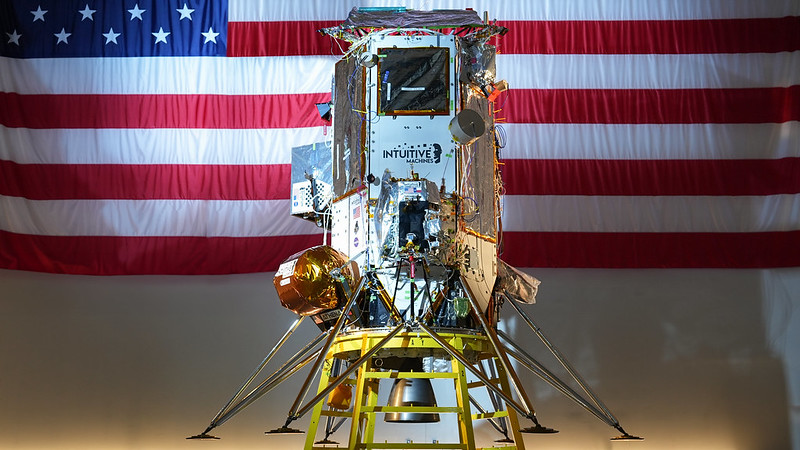The U.S. National Science Foundation National Radio Astronomy Observatory (NSF NRAO), in partnership with several leading Mexican universities and research institutes, has announced a series of landmark agreements and meetings aimed at advancing Mexico’s role in the Next Generation Very Large Array (ngVLA) project.
Recent News
Astronomers Discover a Superheated Star Factory in the Early Universe
Astronomers have uncovered a previously unknown, extreme kind of star factory by taking the temperature of a distant galaxy using the ALMA telescope. The galaxy is glowing intensely in superheated cosmic dust while forming stars 180 times faster than our own Milky Way.
Astronomers Share Largest Molecular Survey To-date: GOTHAM Legacy Data Goes Public
Astronomers in the “GBT Observations of TMC-1: Hunting Aromatic Molecules” research survey, known as GOTHAM, have released a spectral line survey with largest amount of telescope time ever conducted, charting more than 100 molecular species only found in deep space.
Space Company Taps Coast-to-Coast Radio Telescopes for Moon Mission

Intuitive Machines partners with NSF National Radio Astronomy Observatory, using 10 iconic U.S. telescopes from Hawaii to Virgin Islands to guide Nova-C lunar lander’s mission
The U.S. National Science Foundation National Radio Astronomy Observatory (NSF NRAO) is supporting Intuitive Machines’ second lunar mission, IM-2, which landed on the surface of the Moon, Thursday, March 6th.
Intuitive Machines has been working with the NSF NRAO over the past year to utilize the NSF Very Long Baseline Array (NSF VLBA) to support precise tracking and data downlink of Intuitive Machines’ Nova-C lunar lander, named Athena, during its mission to the Moon.
“The NRAO adds significant capability to Intuitive Machines’ Lunar Data Network,” said Intuitive Machines CEO Steve Altemus. “Using multiple, strategically located, world-class radio telescopes and ground stations enables our mission controllers to precisely track Athena through near-continuous, data-driven communications.”
The NSF NRAO will provide Intuitive Machines with access to its NSF VLBA network of radio telescopes, in ten locations across the United States, to receive data transmitted by the Nova-C lander during its journey to the Moon, while in lunar orbit, and after landing. The NSF GBT, the world’s largest fully steerable radio telescope, will also collect data. This mission support will improve the accuracy of the lander’s orbit determination through real-time or near-real-time position data.
“NRAO is excited to support Intuitive Machines in their second groundbreaking lunar mission,” said NSF NRAO assistant director Joe McMullin, who managed this project. “Our telescopes and expertise in radio astronomy will contribute to this mission’s success by providing accurate positional data and reliable communication links. NRAO recognizes the value in supporting commercial partnerships to advance space exploration and scientific discovery.”
About NRAO
The National Radio Astronomy Observatory (NRAO) is a facility of the National Science Foundation, operated under cooperative agreement by Associated Universities, Inc. NRAO designs, builds, and operates cutting-edge radio telescopes for use by scientists around the world.
This news article was originally published on the NRAO website on March 6, 2025.
Recent News
NSF National Radio Astronomy Observatory and Mexican Institutions Sign Historic Agreements to Advance ngVLA Collaboration
The U.S. National Science Foundation National Radio Astronomy Observatory (NSF NRAO), in partnership with several leading Mexican universities and research institutes, has announced a series of landmark agreements and meetings aimed at advancing Mexico’s role in the Next Generation Very Large Array (ngVLA) project.
Astronomers Discover a Superheated Star Factory in the Early Universe
Astronomers have uncovered a previously unknown, extreme kind of star factory by taking the temperature of a distant galaxy using the ALMA telescope. The galaxy is glowing intensely in superheated cosmic dust while forming stars 180 times faster than our own Milky Way.
Astronomers Share Largest Molecular Survey To-date: GOTHAM Legacy Data Goes Public
Astronomers in the “GBT Observations of TMC-1: Hunting Aromatic Molecules” research survey, known as GOTHAM, have released a spectral line survey with largest amount of telescope time ever conducted, charting more than 100 molecular species only found in deep space.
